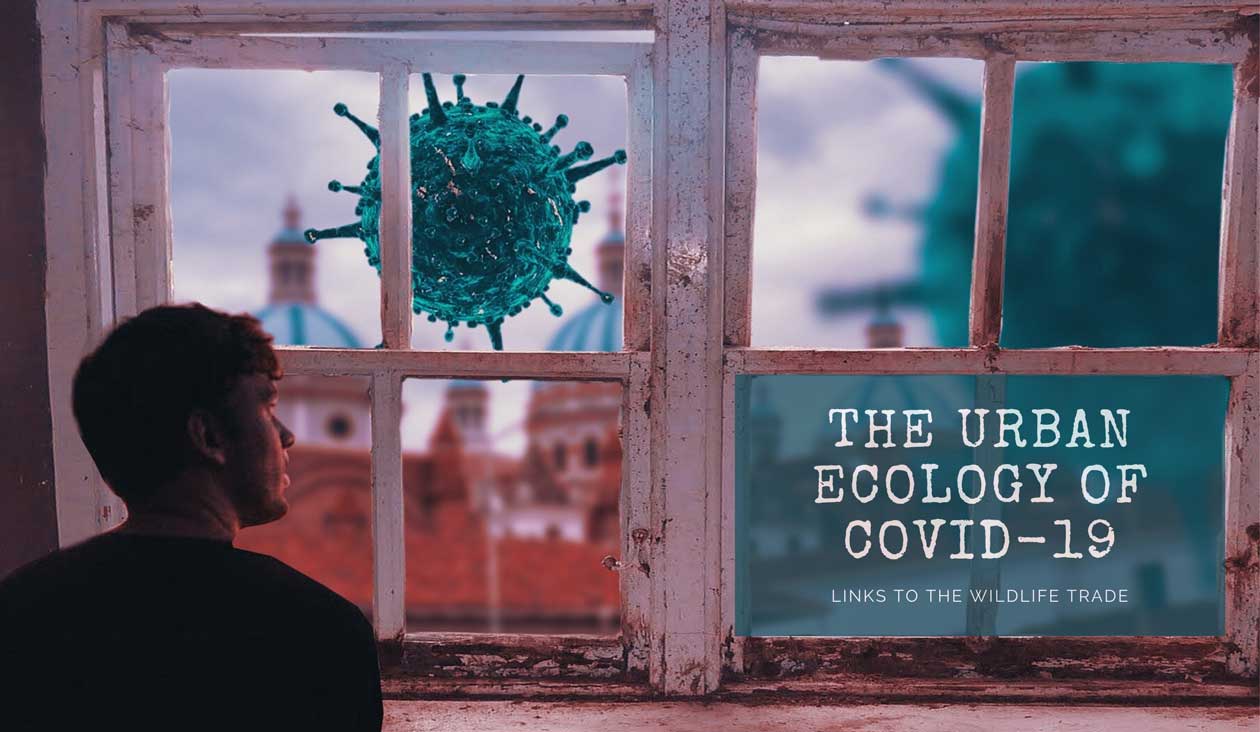A few weeks ago, I was asked about my thoughts on the urban ecology of COVID-19. Interesting question. One that has had me thinking ever since.
There are many dimensions to it. One is the clear link between the emergence of the SARS-CoV-2 virus and wildlife markets. Markets where many animal species are densely maintained in stressful situations – conditions that often lead to illness and facilitate interspecific exposure to secretions and droppings – perfect for emerging infectious diseases. But the link to urbanisation is unclear.
IN CHINA
If we look at this solely as a Chinese issue, then we can hypothesise that urbanisation exacerbates the risk. This is based on the expectation that wealthier urbanites are the ones who can afford luxury goods – goods that include wild animals and their products being sold for use in foods, ornaments, traditional medicines and as pets. Indeed, it seems the Chinese trade largely involves importation (with items coming from all over the world) and the demand largely comes from cities. And of course, the risk of human-to-human transmission increases in dense urban populations.
But I reject the notion that this is a Chinese, or even an East Asian, issue. The wildlife trade exists everywhere. And everywhere it exists, people come into close contact with non-human animals – some of which may harbour pathogens that are able to make the ‘jump’ to infect our species. Like what happened with Ebola and HIV in Africa, for instance.
But there’s at least one major difference between wildlife exploitation in Africa and Asia.
IN AFRICA
In Africa, you have traditional hunters in rural areas practicing subsistence hunting, i.e., consuming so-called bushmeat. They and those who prepare and consume the meat at least occasionally come into close contact with wild species – thus, they may be exposed to pathogens and become infected. Over time, rural populations may build up some immunity – this reduces the chance of an outbreak. So does the fact that rural population density is low.
Different story in cities. Urbanites rarely encounter wild animals, let alone infected individuals – their immunity is low. And cities are densely populated. So, once you have an increase in trade, meaning more individuals and species being sold, and the trade enters urban areas, the risk of exposure and potential for spread increase.
Now, back to the link between urbanisation and affluence because it promotes aviation and other forms of long-distance travel. As we have seen with COVID-19 (and SARS before it), it was overseas travel from China that initiated global spread. Or in Brazil, some of the first clusters were at elite urban country clubs, whose patrons had brought the virus back with them as they returned from traveling abroad. Of course, now the virus is spreading in the favelas, or slums, revealing another, social-justice, twist in the urban ecology story of COVID-19 – perhaps one for a later post.
For more on the link the wildlife trade and emerging infectious diseases, check out this paper and for the results of a modelling approach to understanding the link to urbanisation, see this one.



